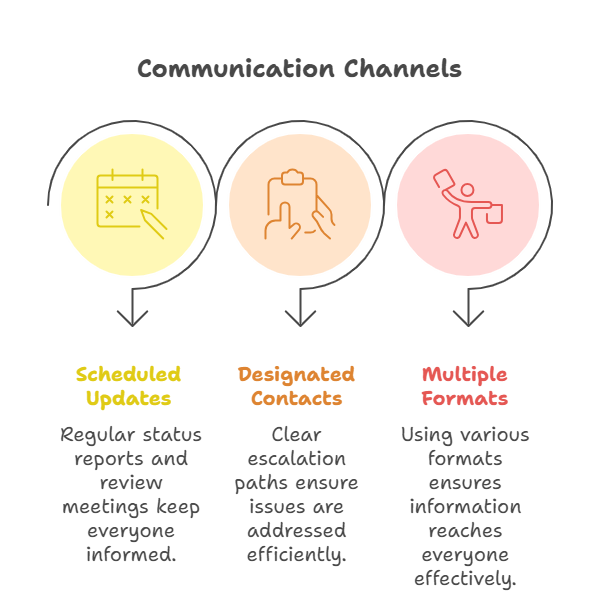How to Manage Stakeholder Expectations Effectively
Learn practical strategies for managing stakeholder expectations through identification, communication, and continuous engagement to ensure project success.
Why Stakeholder Expectation Management Matters
Effective stakeholder management is essential for the success of any project, initiative, or organization. When stakeholders have clear, realistic expectations, projects run smoother, teams stay aligned, and outcomes improve significantly. The primary responsibility of a project manager is often described as managing stakeholder expectations throughout the project lifecycle.
Managing stakeholder expectations helps ensure everyone operates with a shared understanding of the project's objectives, scope, and requirements. This alignment prevents misunderstandings, reduces rework, and builds trust among all parties involved.
Identify and Understand Your Stakeholders
Before you can manage expectations, you need to know who your stakeholders are and what matters to them. This foundational step involves mapping out all individuals or groups with an interest in your project's outcome.
Key stakeholder categories typically include:
- Internal stakeholders: Team members, executives, department heads
- External stakeholders: Clients, vendors, regulatory bodies, community groups
- Primary vs secondary stakeholders: Those directly affected versus indirectly impacted
By identifying these stakeholders and their interests, you can tailor your communication and engagement strategies to address their specific needs and concerns.
Establish Clear Communication Channels
Once you've identified stakeholders, the next critical step is establishing transparent communication protocols. Regular, consistent communication prevents assumptions and keeps everyone informed.
Effective communication strategies include:
- Scheduled updates: Weekly status reports, monthly review meetings
- Designated points of contact: Clear escalation paths for issues
- Multiple communication formats: Meetings, emails, dashboards, and collaborative platforms

Setting clear communication channels ensures stakeholders receive timely information through their preferred methods, reducing frustration and building confidence in the process.
Set Realistic Expectations Early
The most successful expectation management happens at the beginning of projects. Establishing realistic boundaries and deliverables from the start prevents disappointment later.
Key elements of expectation setting include:
- Defining success criteria: What does "done" look like for this project
- Establishing boundaries: What's in scope and, just as importantly, what's out of scope
- Creating service level agreements: Setting an SLA is a great way to manage expectations and create boundaries
These rules governing successful and unsuccessful outcomes provide the guidelines required to set and manage stakeholder expectations effectively throughout the project lifecycle.
Engage Stakeholders Continuously
Stakeholder management isn't a one-time activity but an ongoing process. Regular engagement keeps stakeholders invested and provides opportunities to address concerns before they escalate.
Effective engagement practices include:
- Early and frequent involvement: Bring stakeholders into discussions from the beginning
- Active listening sessions: Dedicated time to understand stakeholder perspectives
- Feedback mechanisms: Structured ways for stakeholders to provide input
Engaging stakeholders early and often builds relationships and creates opportunities to align expectations with project realities as they evolve.
Monitor and Adapt Expectations
Projects change, and so do stakeholder expectations. Continuous monitoring allows you to identify shifting priorities and adjust your approach accordingly.
Monitoring strategies should include:
- Regular check-ins: Scheduled conversations about expectations and satisfaction
- Progress tracking: Transparent reporting against established milestones
- Expectation audits: Periodic reviews of whether initial assumptions still hold true
This continuous monitoring and reviewing of engagement efforts ensures your approach remains relevant and effective as project circumstances change.
Visualize Your Stakeholder Management Strategy
Managing stakeholder expectations involves multiple interconnected elements that benefit from visual organization. Creating a stakeholder expectation map helps you see relationships, communication flows, and potential gaps in your approach.
ClipMind offers powerful visualization tools that can help you map stakeholder relationships and expectation management strategies. Our mind mapping capabilities enable you to create clear, structured overviews of your stakeholder landscape, making it easier to identify patterns and optimize your engagement approach.
Whether you're managing a construction project, software development process, or any complex initiative, these stakeholder expectation management principles are universally applicable and essential for achieving your goals.
 ClipMind
ClipMind